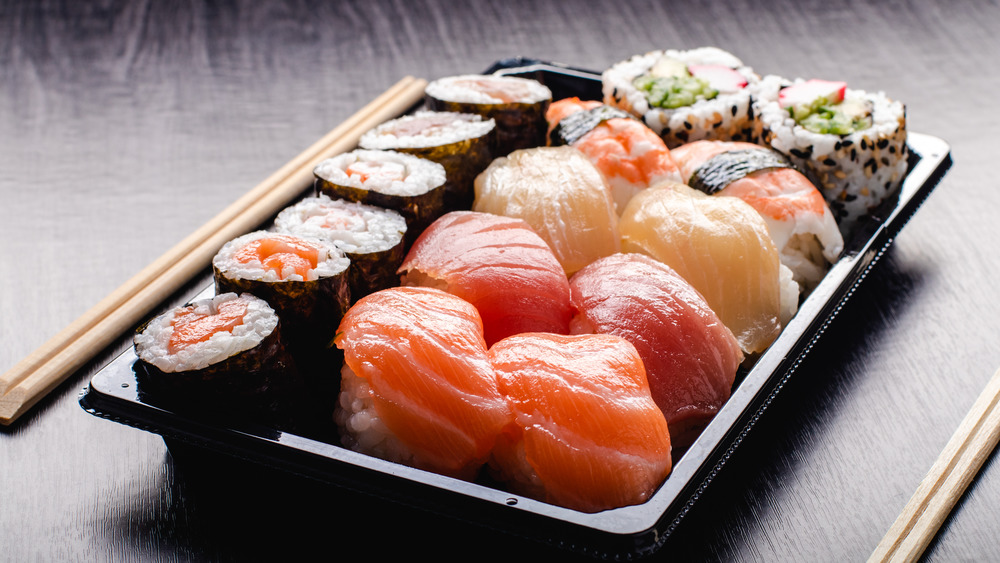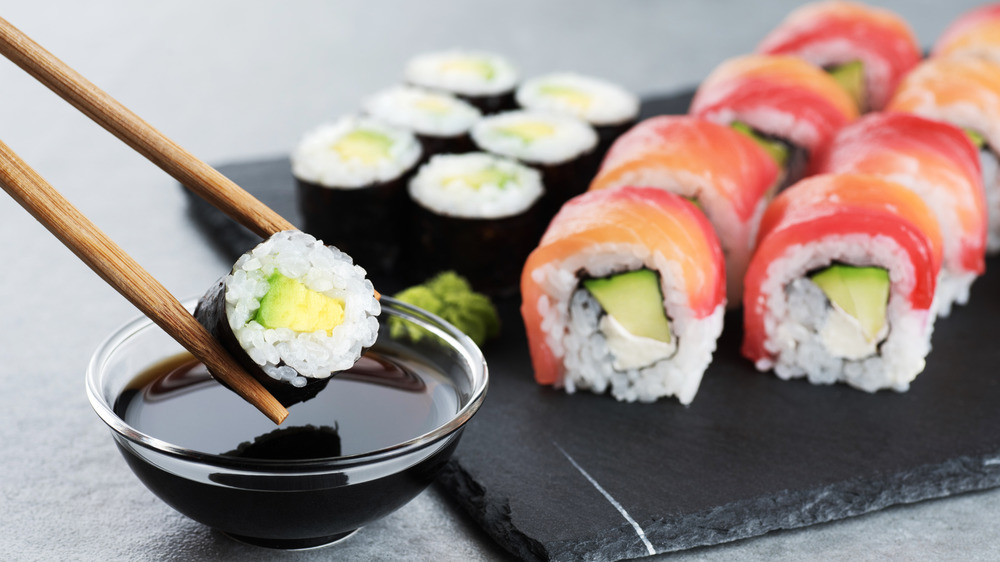Sushi Beginners Need To Know These Keywords
Sushi isn't the exotic, unfamiliar food it once was in the West. According to Mental Floss, sushi restaurants in America now make about $2 billion a year! If you're still new to sushi, or perhaps an avid sushi eater who's somewhat unfamiliar with all that goes into the dish, don't worry; there's still plenty of time to acquaint yourself. For a truly quality experience, don't get your sushi at a grocery store or defrost frozen sushi. Instead, go to a sushi-ya or kaitenzushi — Japanese words for restaurants that specialize in sushi (via Japan Guide). Now that you've learned those words, here are more sushi terms you should know.
First, it's a good idea to know what types of sushi are out there. Your Japan explains that the most traditional type is nigiri, which is a piece of fish on a round bed of rice. The sushi most familiar to Americans is likely the uramaki roll. Your Japan characterizes it as an inside-out, "Americanized" version of the classic maki roll, with rice on the outside, then seaweed (also known as nori), then other fillings. Typically, maki rolls have nori on the outside and rice on the inside.
There's a type of sushi for everyone
The average person probably understands sushi to always involve raw fish, usually combined with rice and/or seaweed. But sushi restaurants can have something for everyone, even people with dietary restrictions.
If you're vegan or vegetarian, you're in luck. Your Japan reveals that traditionally, maki rolls had just cucumber, sushi rice, and nori, making them automatically vegetarian. Other common fish-less sushi fillings include shinko (pickled vegetable), inarizushi (fried tofu skin), natto (fermented soybean), and avocado (via Live Japan).
Even gluten-free folks can get in on the sushi goodness. Your Japan suggests informing your server of this fact to stay on the safe side, and bringing your own tamari to use instead of soy sauce, which almost always contains gluten.
For sushi beginners without dietary restrictions, Your Japan recommends ordering items like California rolls, shrimp tempura rolls, and Philadelphia rolls, which have ingredients like avocado, cucumber, fried shrimp, and cooked crab or imitation crab. If you can't use chopsticks, Your Japan notes that using your hands to eat is perfectly acceptable.
And of course, don't forget the soy sauce for dipping, the wasabi for some extra heat, and the ginger to cleanse your palate afterward!

